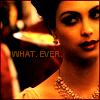
Fans are excited and I’ve had non-stop questions about when the game is coming out. I mentioned this earlier, but I tend to err on the conservative side of announcing releases because, in my experiences, there IS such a thing as marketing/publicizing too early. This is also why we’ve been more transparent about what’s happening and when. Fan expectations are high and that means better (more) communication as this process continues. See also: talk is cheap and doesn’t get the words down or the game/album/story/novel/comic/etc. out the door!
Or, to put it a little more blunt: you really don’t want us to rush and put out a crappy game — do you?
Still, I realize there’s probably a ton of folks who have no idea what goes into game design and production. Hence, the reason for my post today. I thought I’d take a minute and show you what goes into this process. Mind you, these are very common components that relate to a lot of games and this one happens to be a little more complex because we have to get approval from our friends at Fox television studios. (This doesn’t include any of the other business-related elements like marketing, putting the game into distribution, convention planning, etc.) We’re not creating the game in a bubble, you see. They’re very much involved in what we’re doing.
Oh! Almost forgot! If any of my friends out there in RPG-land on the publishing side spot a missing piece or want to chime in to offer links or more visibility, feel free. Without further adieu…
- Personnel – Who’s working on the game? What talents do they have? When will they be available?
- Time And Resources – How much time do folks have to work on this? What’s the budget? How do different roles overlap/complement each other?
- Scheduling – Deadlines, deadlines, deadlines. So far, we’ve coordinated them for almost a dozen people. Without them, nothing for this the game would ever come out in a reasonable timeframe.
- Brainstorming – What is the definition of a Firefly Role-Playing Game? What do players do at the table? What’s the mechanic going to be? What characters will they play? What releases do we want to make?
- Setting Bible – Where the heck is this game being played? What’s the timeframe? What can we/can’t we do?
- Development/Management – A developer works with the writers and knows the system to shape the game according to the overall vision of what we’re trying to do. We have a developer on Echoes of War and, in many ways, multiple developmental roles for the Firefly RPG. That’s partly what a Brand Manager (e.g. me) does in addition to people wrangling, outlines, etc. This is a step-up from brainstorming, because once the vision is clear, it has to be honed and sharpened for multiple people.
- Writing – There are layers to writing the Firefly RPG because of the voice we use. First, we need good content. Then, it needs to be spruced up. Content here comes in multiple pieces and it all needs to fit together seamlessly. Now, here’s the thing. Right now, the estimated word count of the Firefly RPG is likely going to be 150 to 200K words. The Echoes of War adventures we announced will likely be between 20 to 30K a piece. The corebook may change pending game development; right now all we have are estimates. This does not include revisions; for every draft, there will likely be changes to fit the larger context.
- Designing – Game mechanics don’t just grow on trees. The rules are important and that’s where the design team comes in. Even with a base system, everything has to tie together and that’s why we have a systems team in place. Remember, we’re making a Firefly Role-Playing Game. While there will be worldbuilding for fans to draw from, everything we do is in the context of a game — even the episodes.
- Playtesting – The best games have been playtested and played a number of times before they’re released. We’re doing the same thing, but with closed groups. Playtesters have to be managed for feedback and the larger the number of groups, the more time it takes to wrangle the communication.
- Editing – Our editors are QC – Quality Control. If something isn’t written clearly, they’ll revise it. If a paragraph has typos, they’ll fix it. But, they need a reasonable amount of time to review existing text. Yes, even text that is perfectly acceptable needs to be edited. A good editor (and we have two) is crucial to production. You can see how important it is to ensure the writing is sharp — especially for a game like this!
- Art/Layout – Art can take anywhere from a month to three months to receive, or longer depending. There are layers to that process, too, and I think folks sometimes forget that art doesn’t just pop out of nowhere. After the final text and art is done, the layout artist needs to put together the book for whatever formats (e.g. print versus digital) it’ll be available in. This does not count time spent for revisions. And I didn’t even mention the indexing!
- Approvals – Whether you work for your own company or not, the game has to be approved before it gets released. In our case, we have internal approvals and our friends at Fox. So, even when the game is finished, it still has to go to Fox before we can release it. If there’s changes, then the release is delayed.
I’m pretty sure I forgot something in this list… Hopefully, even with what I have written here, you can see why games are a lot more complex and time-consuming to create than you might have thought. Back to it then!
- Mood: WRITE. REVISE. RINSE. REPEAT.
Caffeinated Beverages Consumed: Too many!
Work-Out Minutes Logged Yesterday: There was a hill. And I beated it.
In My Ears: The screaming cries of my thoughts.
Game Last Played: Final Fantasy IX
Movie Last Viewed: Ted
Latest Artistic Project: *Still* need to take pictures…
Latest Release: “The Button” We Are Dust anthology



One Response to So What Goes Into A Firefly Game Anyway?